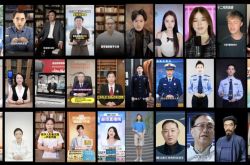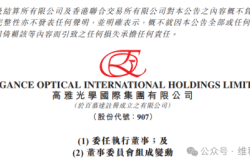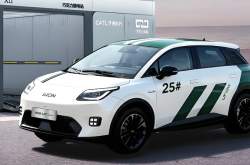Osamu Suzuki Passes Away: A Half-Century of Leadership, A Complex Legacy of Ambition and Challenge
![]() 12/31 2024
12/31 2024
![]() 593
593
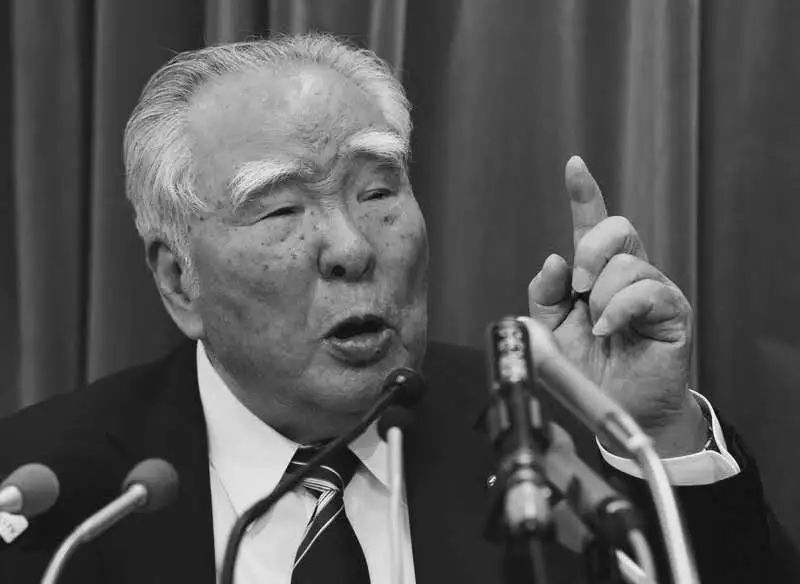
Introduction
Now, all is settled.
On December 27, Suzuki Motor Corporation announced the passing of its former president, Osamu Suzuki, who succumbed to malignant lymphoma on December 25, aged 94. With the longest tenure as the head of Suzuki in its history and even in the global automotive industry, Suzuki relinquished his power at 91 and passed away three years later. From assuming the presidency in the 1970s to continuing his leadership as chairman, Osamu Suzuki controlled Suzuki for over 40 years, spanning almost half a century.
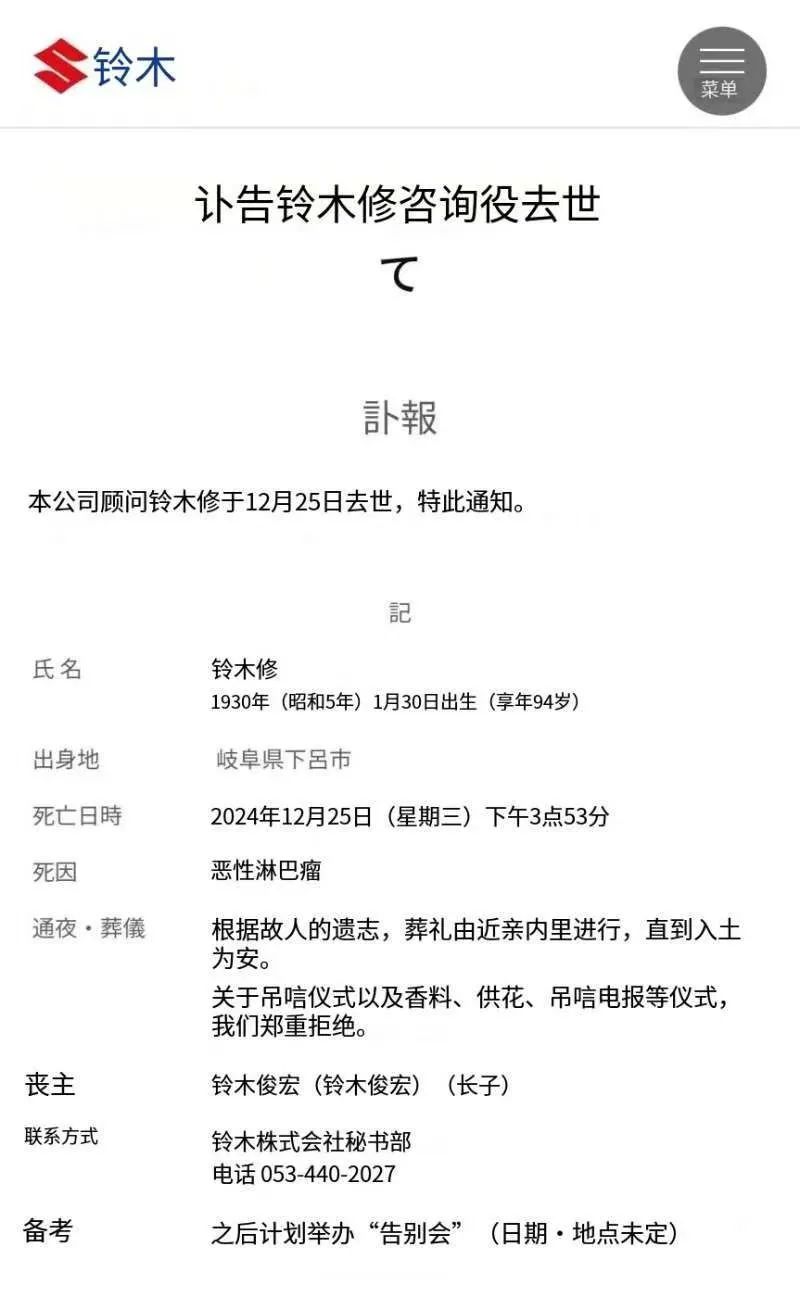
All is settled now.
Born in Iida-gun, Gifu Prefecture, Japan, in 1930, Osamu Suzuki joined Suzuki Motor Corporation in 1958. As the son-in-law of the company's second president, Toshimitsu Suzuki, he became a company director in 1963, president in 1978, and chairman in 2000. Following the untimely death of his successor and son-in-law, Hirotaka Ono, due to illness, Osamu Suzuki resumed the presidency of the company in 2008.
Was it fate or timing?
Hirotaka Ono's death marked a crucial turning point in Osamu Suzuki's career and in the history of Suzuki Motor Corporation. In his autobiography, the elder man wrote, "Unfortunately, I still haven't found a suitable successor, so I have to remain young, keep moving forward, and shoulder everything at the company."
This turning point indirectly shaped the mixed legacy of Osamu Suzuki's life. In his later years, he was often lonely, navigating between clarity and confusion, witnessing a new wave of transformation in the automotive industry. He was anxious, irritable, and authoritarian, but the industry seldom saw the helplessness behind these negative labels.
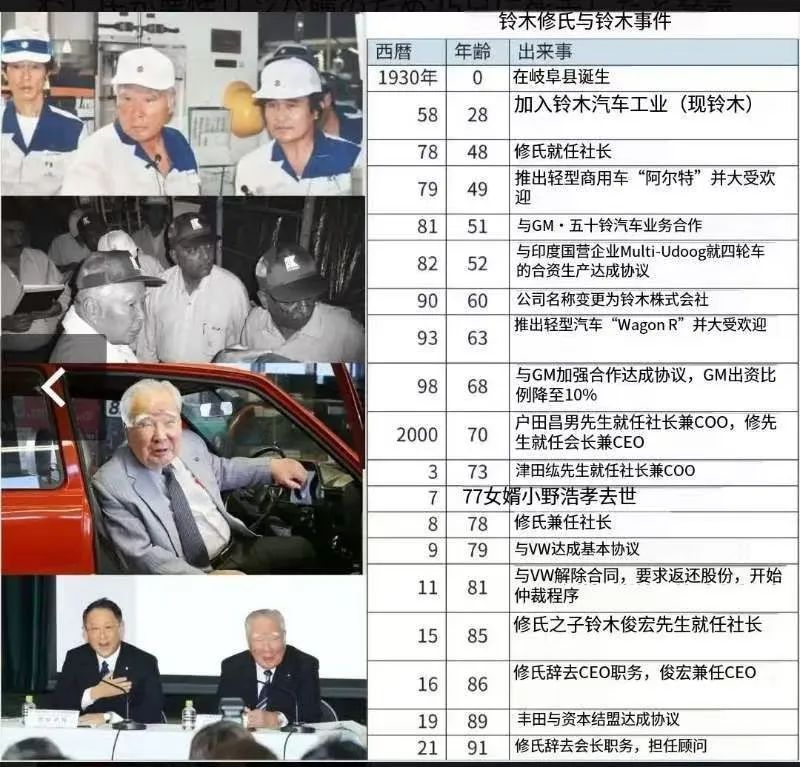
Ancestor of rejuvenation, cost killer
Osamu Suzuki was born in 1930 in a poor village in Shirakawa, Gifu Prefecture, Japan, now a renowned health and wellness hot spring village. However, in the early 20th century, it was a remote corner inhabited by only 5,000 people.
As a child, Osamu Suzuki disliked this remote place and secretly vowed to leave this backward area at all costs. The only way to change his fate was to study hard.
After graduating from university, Osamu Suzuki joined Suzuki Motor Corporation (later renamed Suzuki Motor Corporation) in 1959. At that time, Suzuki's factory was a wooden building with a capital of only 500 million yen and annual sales of less than 5 billion yen.
Osamu Suzuki experienced internal struggles in the planning office, was transferred to the sales department, and then relegated to work on the frontline in the factory. Finally, with the promotion and guidance of his father-in-law, Toshimitsu Suzuki, he gradually moved towards the center of the company's power. According to his own account, starting from 1989, he inspected all domestic and foreign factories annually, spending several days walking through every corner of the factories himself. "I can spot any waste and areas needing improvement," he said.
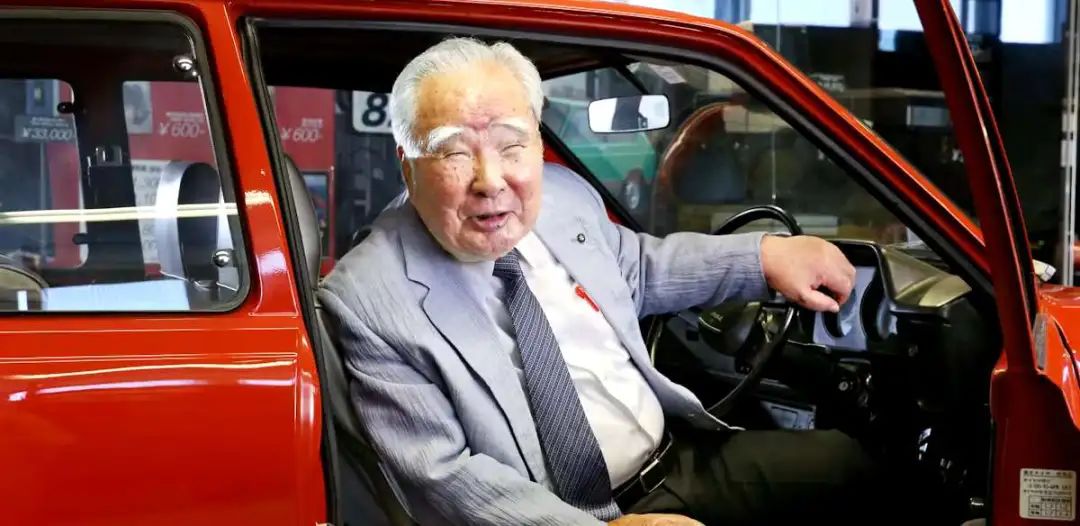
He was also a cost killer.
Within Suzuki, Osamu Suzuki advocated a manufacturing principle of "saving 1 yen." If the cost of a component could be reduced by 1 yen, and considering that a car is made up of around 10,000 to 30,000 components, the cost savings per car could amount to 30,000 yen. In this way, the industry believed that the seemingly unattainable sales target of 3 trillion yen and profits of tens of millions of yen could be achieved through savings starting from just 1 yen.
At his peak, Osamu Suzuki was clear-headed, decisive, and strategic. He had a strong sense of crisis. Within Suzuki, he repeatedly emphasized the company's "25-year crisis cycle." Whether it was the labor disputes in 1950 or the failure to adapt to exhaust emission regulations in 1975, he believed that this cyclical law was inevitable and followed such a pattern step by step.
"Cedars are easily broken, but bamboo is hard to snap."
"It snows heavily in the mountains. Cedars sprout early but cannot withstand the weight of heavy snow and break. However, bamboo with some spacing between stalks is not as easily broken and remains upright. Similarly, in business, rapid growth is the most dangerous time."
With unwavering determination and a strong sense of crisis, Osamu Suzuki led Suzuki to achieve multiple breakthroughs. In the 1980s, he decided to enter the Indian market, where no Japanese automaker was willing to venture at that time. Through years of hard work, Suzuki eventually captured half of the market share in the country, giving birth to the Indian subsidiary Maruti Suzuki.
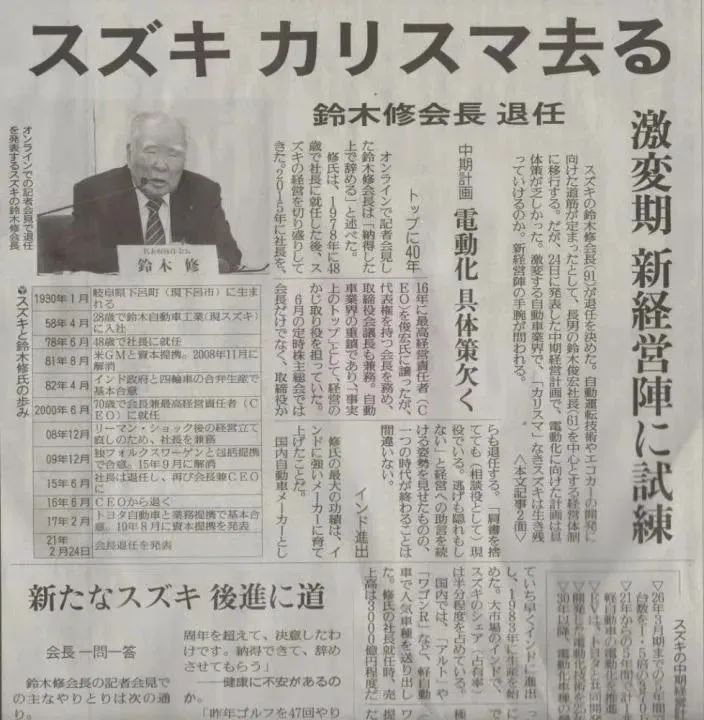
Relying on his strong leadership in emphasizing frontline production and cost control, Osamu Suzuki transformed Suzuki Motor Corporation, which had sales of only 323.2 billion yen when he became president, into an automaker with sales of 3 trillion yen over 40 years of practice.
Data shows that Suzuki's consolidated sales exceeded 5 trillion yen in fiscal year 2023 (ending March 2024), with an operating profit of 465.6 billion yen.
"A mosquito won't be swallowed by a whale"
Upon learning of Osamu Suzuki's death, his lifelong friend and Toyota Motor Corporation Chairman Akio Toyoda immediately issued a condolence message.
"Mr. Osamu Suzuki once called himself the 'father of small and medium-sized enterprises.' However, in the automotive industry, he protected the light vehicles that are a unique cultural product of Japan. With his outstanding leadership and managerial courage, he kept Suzuki alive amidst fierce competition. Despite the difficult external environment, he never gave up and can be considered a role model for us!"
Osamu Suzuki and Akio Toyoda once formulated an important guideline for the two companies to work together. Toyota and Suzuki started their business cooperation in 2016 and reached a capital alliance in 2019. At various press conferences, we could often see Osamu Suzuki and Akio Toyoda speaking together, accepting interviews, and posing for photos.
In fact, the interest binding and business cooperation with Toyota are a microcosm of Suzuki Motor Corporation's "survival philosophy." This unique "survival philosophy" of Suzuki Motor Corporation can be traced back to its alliance with General Motors of the United States.
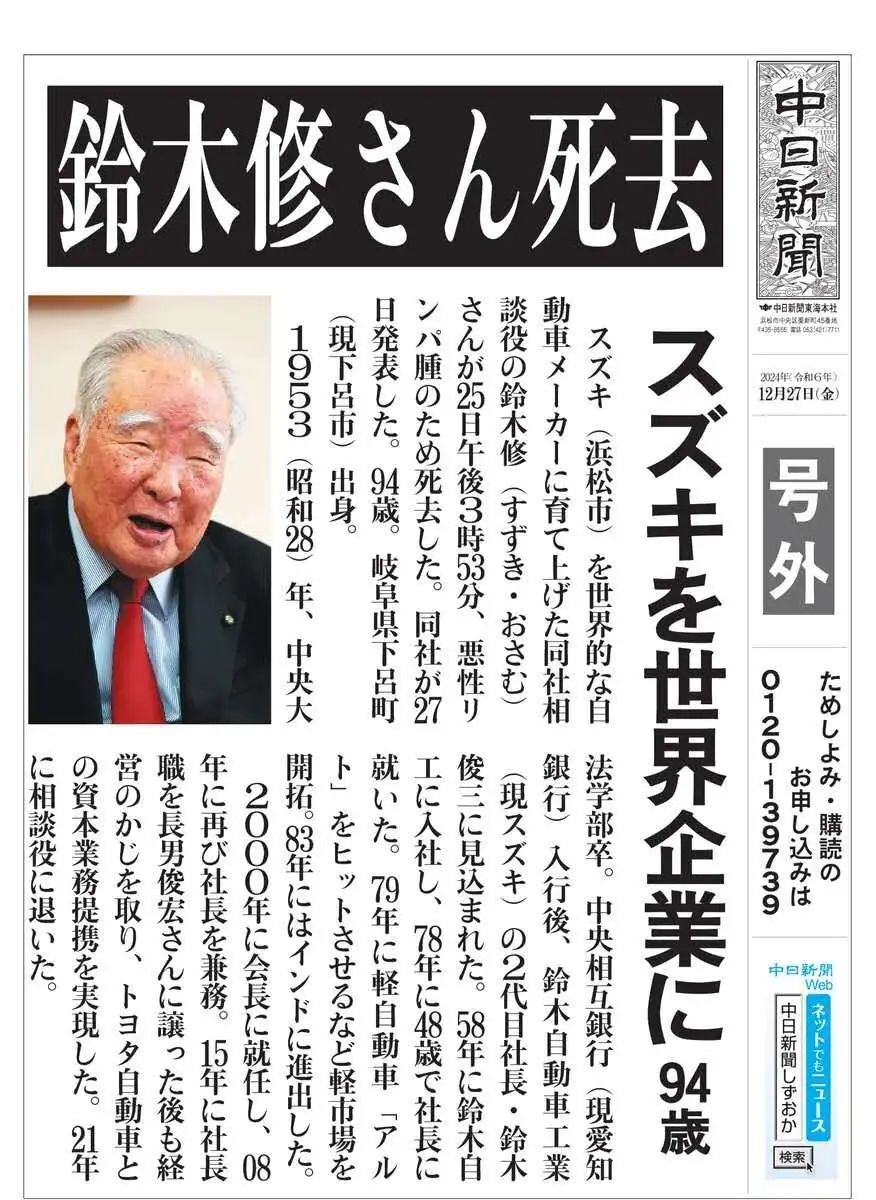
After becoming president, the first thing Osamu Suzuki did was to promote cooperation with General Motors of the United States, which was officially announced in 1981. In Osamu Suzuki's view, General Motors was Suzuki's "teacher" in car manufacturing, showing it the modern process of automobile manufacturing and providing it with a thorough modern training from the ground up.
"A mosquito won't be swallowed by a whale."
Regarding the potential dangers of cooperating with General Motors, Osamu Suzuki expressed his own views. "Suzuki won't be easily swallowed by General Motors. The size difference between General Motors and Suzuki is like that between a whale and a minnow. But in reality, it could also be like the relationship between a whale and a mosquito. A small fish might easily be swallowed by a whale, but a tiny mosquito flies away quickly before sensing any danger."
It was this business value that allowed Suzuki to continuously engage in capital cooperation with global automotive giants, surviving in the fragmented automotive industry in a flexible and independent manner.
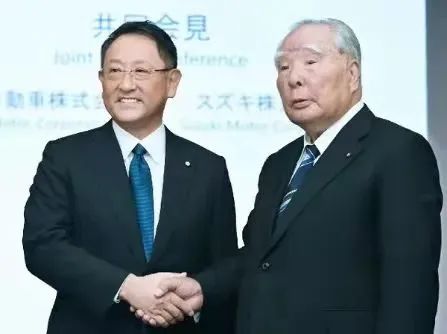
Taking Volkswagen as another example,
In 2009, Volkswagen and Suzuki formed a cross-shareholding alliance, with Volkswagen acquiring a 19.89% stake in Suzuki for 1.7 billion euros and Suzuki acquiring a 1.5% stake in Volkswagen for 770 million euros. The logic behind this cooperation was that Volkswagen valued Suzuki's strength in small cars and Southeast Asia, while Suzuki hoped to obtain diesel engine technology from Volkswagen.
However, starting in 2011, the relationship between the two gradually deteriorated. Volkswagen treated Suzuki as an "associate company" and failed to provide the promised diesel engine technology. Suzuki began international arbitration proceedings seeking a "divorce," and in 2015, Suzuki repurchased Volkswagen's shares. In early 2016, Volkswagen and Suzuki jointly announced a "peaceful separation".
Next, the story of Toyota begins.
In October 2016, Akio Toyoda and Osamu Suzuki met in Tokyo and announced that the two automakers would cooperate. They both agreed that automakers were facing technological challenges from the new Four Modernizations, and Japanese automakers needed to unite. The following year, Toyota and Suzuki signed a non-binding memorandum of understanding, confirming formal negotiations around new energy vehicles and other areas.
In August 2019, Toyota and Suzuki formed a capital alliance. According to the agreement, Toyota acquired a 4.94% stake in Suzuki for 96 billion yen, while Suzuki acquired a 0.2% stake in Toyota for 48 billion yen.
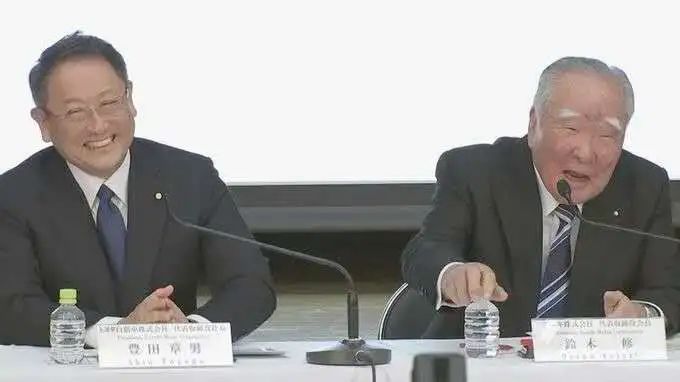
After Osamu Suzuki's passing, the Nikkei Asian Review quoted the term "rebellious spirit" to describe his stubborn and independent personality.
From the early alliance with General Motors to later collaborations with Volkswagen and Toyota, behind Osamu Suzuki's "rebellious" spirit lay a pragmatic approach to reducing internal friction and fostering mutual assistance. It was this practical business philosophy that allowed the small Suzuki to gradually grow and achieve subsequent glories.
The mixed legacy of the "post-Osamu Suzuki era"
For half a century, Osamu Suzuki was the de facto leader of the company. The era of Osamu Suzuki should have ended long ago, but facing the allure of power, he stubbornly fought until the end.
In recent years, when he was almost "ruling behind the scenes," sharp Japanese media even used the term "old and dictatorial ruler" to express dissatisfaction with Osamu Suzuki's long-term authoritarian rule.
In fact, Japanese media revealed that Osamu Suzuki stubbornly expressed his attitude that "he would never retire until he died." However, after being hospitalized for pneumonia in 2015, his health was near its limit, making it difficult for him to make precise and clear business decisions for the company.
Risking tarnishing his late-career reputation, Osamu Suzuki still held onto company power at the age of 90, which put Toshihiro Suzuki, the current president, in an awkward position.
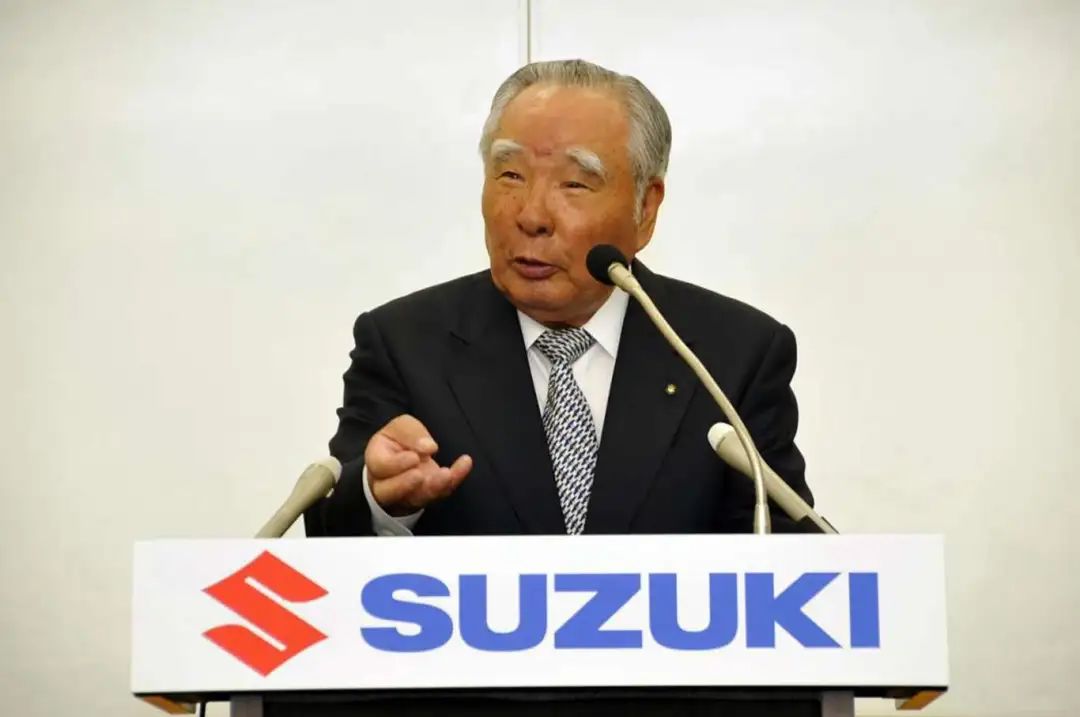
A century ago, Ichiro Saito, the second-generation chairman of the Sumitomo Group, shared his insights on business management:
"The biggest obstacle to company development is not the mistakes of the young but the arbitrariness of the old." As the core manager during the growth period of the Sumitomo financial group, he left this message before retiring at the peak of his career at the age of 57. However, Osamu Suzuki was different; he hesitated to let go of his power.
The negative impacts were evident.
In 2016, Suzuki was exposed for falsifying fuel consumption data; in 2018, it was again exposed for tampering with fuel consumption and emission data; and in April 2019, due to irregularities in vehicle inspections within the company, Suzuki announced the recall of about 2 million vehicles of 40 models in Japan. Osamu Suzuki was responsible for all these incidents.
Under pressure, after the fuel falsification incident in 2016, Osamu Suzuki took responsibility and resigned as CEO, with his eldest son, Toshihiro Suzuki, taking over. However, unlike Mitsubishi President Tetsuro Akune, who stepped down from power due to the fuel scandal, Osamu Suzuki retreated behind the scenes as chairman, remaining the true power behind Suzuki Motor Corporation. This year marked a turning point, ushering in the "post-Osamu Suzuki era" for Suzuki Motor Corporation.
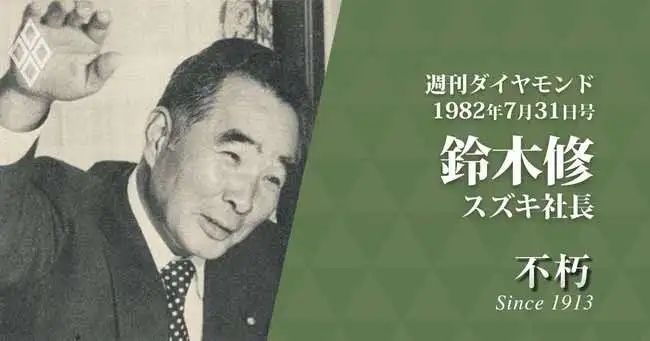
Interestingly, the post-Osamu Suzuki era has arrived, but the new era of Suzuki Motor Corporation has not. There have been many analyses in the industry regarding Osamu Suzuki's long-term grip on power. Due to space limitations, we will not delve into the complex historical reasons, including the sudden death of his first successor and son-in-law, Hirotaka Ono.
Perhaps even Osamu Suzuki himself did not expect that the once "pillar" of the company would eventually become a "stumbling block" for its transformation and expansion.
Fundamentally, a series of negative feedback Suzuki Motor Corporation has faced in recent years, such as scandals related to fuel consumption data and inspections, sluggish domestic growth, and an overall decline in operating profits, are closely related to Osamu Suzuki's business philosophy. Important decisions made during the "Osamu Suzuki era" and the "post-Osamu Suzuki era" have directly impacted the company's long-term development.
Suzuki officially exited the U.S. market in 2013, primarily because its miniaturization strategy could not adapt to the American market's preference for larger vehicles, leading to chronic losses and persistently pessimistic sales figures. In the year it left the U.S., Suzuki's annual sales in the region totaled less than 30,000 units. It then withdrew from China in 2018 for similar reasons to those in the U.S., overly relying on small cars and lagging behind in electrification efforts.
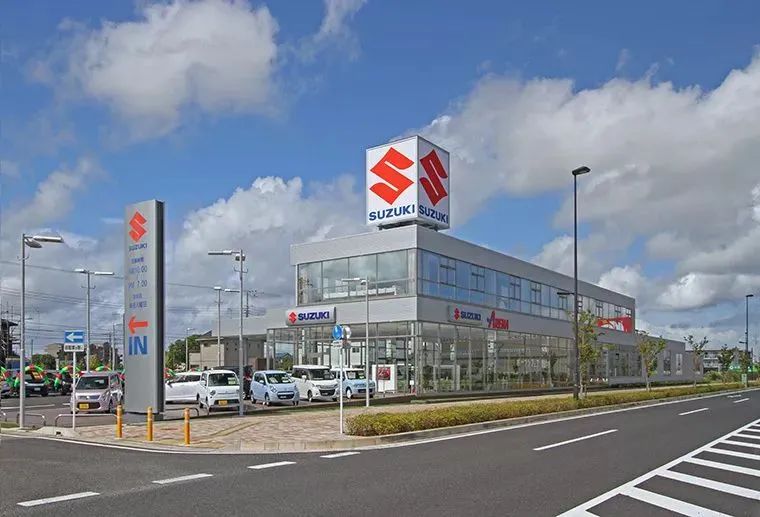
Any enterprise that overlooks the shifts in consumer behavior, neglects the nurturing of regional localization, and ignores the latest technological advancements will inevitably be phased out by the times and the market. When confronted with challenges and critical junctures, cutting losses might seem like a pragmatic approach, but for Suzuki, it was ultimately a shortsighted decision.
China and the United States are indisputably the two largest automotive markets globally. Yet, Suzuki Motors chose to abandon them so decisively, as if bidding farewell without a backward glance. Was this capriciousness, or had they grown too accustomed to the ease of profiting from their stronghold in the Indian market?
For an extended period, Maruti Suzuki, Suzuki Motor's Indian subsidiary, has consistently topped local sales charts and significantly contributed to the company's revenue. It's plausible to surmise that Osamu Suzuki, the decision-maker, was seduced by short-term gains, unaware that these dividends were not a reflection of the system's underlying strength.
Suzuki's heavy investment in the Indian market ultimately proved to be too one-sided.
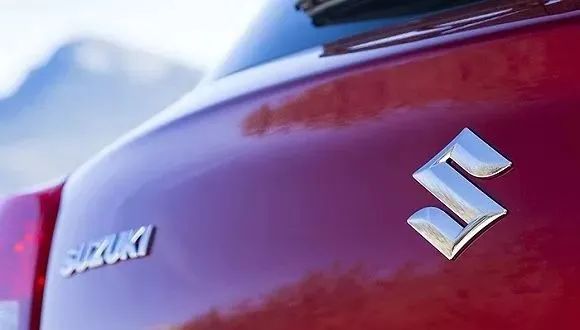
In the coming days, a funeral service for Osamu Suzuki will be held in Japan. Following his official announcement of passing, Japanese media have undertaken a comprehensive retrospective on his illustrious career.
However, the industry's assessment of this venerable figure's achievements and shortcomings began several years ago, during his tenure as president and even after his retirement, when he continued to wield influence behind the scenes.
Many recall the last time they encountered Osamu Suzuki was during this past winter. Already gravely ill, he nonetheless insisted on meeting numerous friends.
This elderly gentleman, now confined to his sickbed, was once a vibrant and energetic figure, boldly facing the scrutiny of reporters worldwide and boldly proclaiming, "I aim to be number one, no matter what—as Suzuki."


